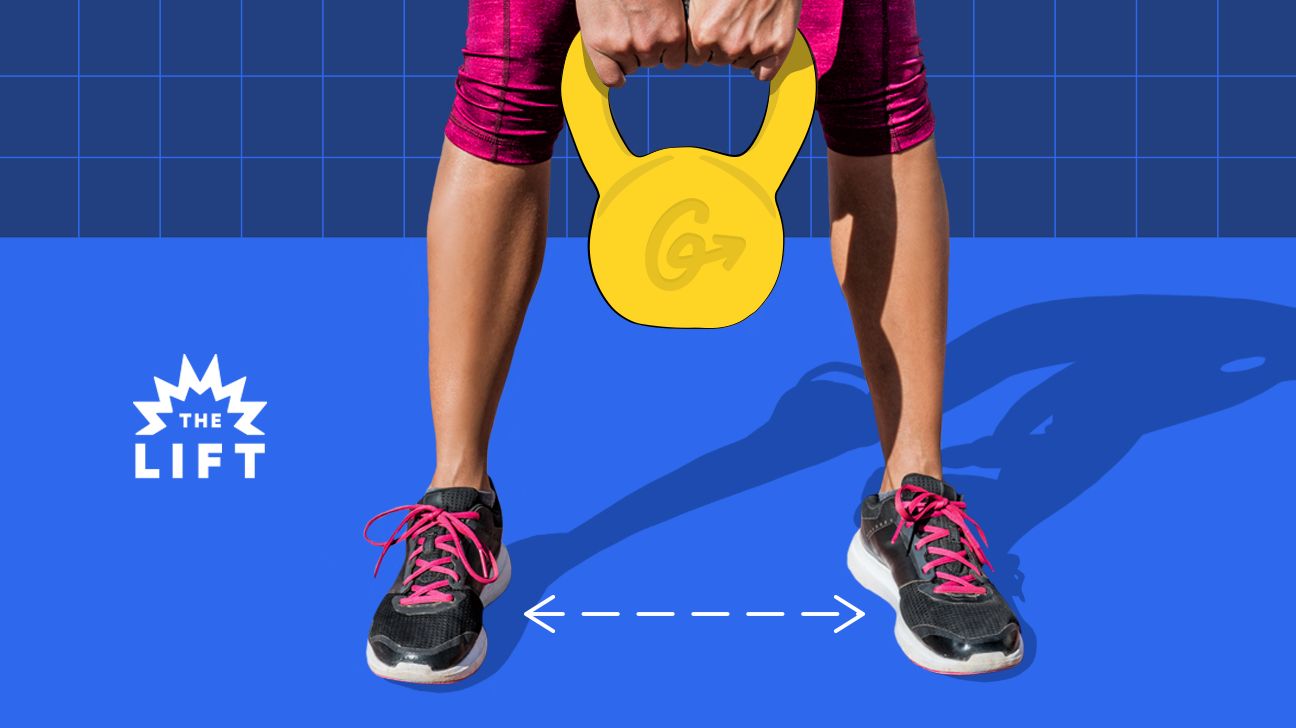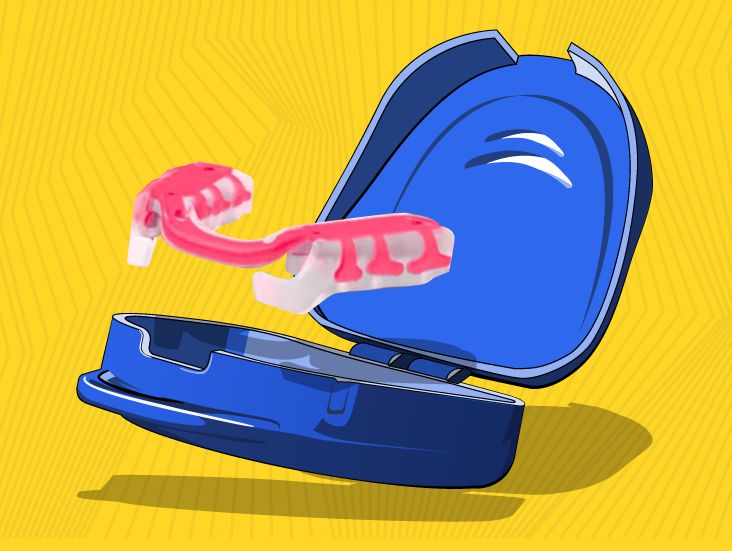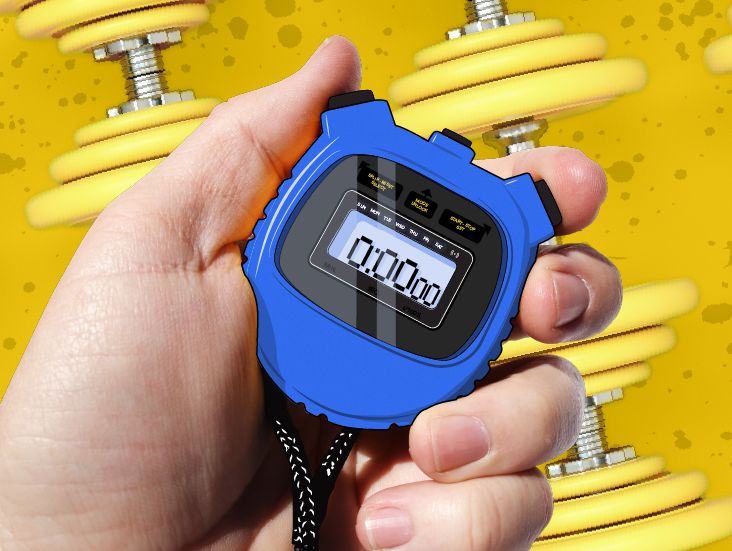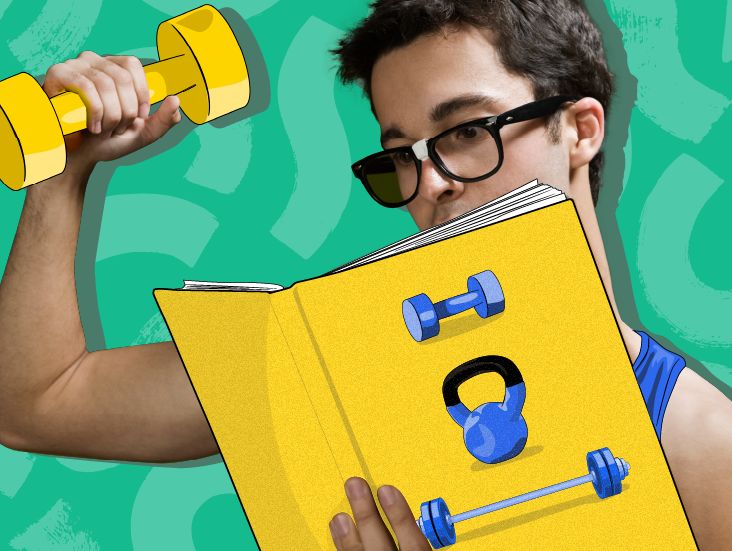You probably think about your feet only when you’re perusing Zappos, getting a pedi, or dealing with a blister. But fitness experts say you should be thinking about your feet every time you exercise!
Your foot position impacts your overall stability, the amount of weight you can lift, and your risk of injury.
Read on to learn more.
“Where and how your feet are positioned during an exercise greatly affects how stable you are during that exercise,” says Niraj Vora, physical therapist and co-founder of The Stride Shop in New Orleans, Louisiana.
No matter what exercise you’re doing, the goal is ALWAYS to be as stable as possible (ASAP) while you do it.
Aoife Okonedo Martin, a personal trainer with Ultimate Performance, a worldwide community of personal trainers, explains: “The more stable we are, the more force we can exert in training.”
The more force we can exert ➝ the more we can lift ➝ the greater the muscle and strength gains.
“How you stand can also impact which muscles are the primary movers during a lift,” says California-based certified personal trainer Ridge Davis.
Consider the barbell back squat: A classic hip-width squat primarily targets your quads and glutes, while a wider-stance squat emphasizes your hips and hamstrings to a greater degree.
Sure, an experienced athlete might use this knowledge to create a more well-rounded strength program. However, it’s a problem if someone who thinks they’re working out a certain muscle group isn’t getting the full gains because of their foot position.
“Your ideal foot positioning while you exercise is dependent on the exercise, as well as the individual’s joint structure and muscle length,” says Martin. “Because no two individuals’ joints or segmental proportions are exactly the same, everyone’s exact stance will vary.”
Meaning: Your ideal stance will likely be different from your lifting buddies’.
The best way to find out which stance works for you is to consult a fitness professional, like a doctor of physical therapy or a certified strength and conditioning specialist.
These general guidelines for foot stance won’t suit everybody or every body! Still, they’re good starting points for those who don’t have access to a fitness professional.
1. Squat
No matter which type of squat you’re doing — air squat, goblet squat, barbell front or back squat — Davis recommends starting with your feet justttttt outside your hips (about an inch), with your toes turned out (somewhere between 10 and 30 degrees).
But you’ll need to change the location of your feet if you try the above position (^) and find that you can’t squat to depth or keep your weight.
Martin explains, “In a squat, we want to ensure that we can at least squat past the point where the femur is parallel with the floor.”
If you can’t get that low, try widening your feet to shoulder width. Doing so gives your derriere more “space” to drop.
For those who don’t have adequate mobility in their ankles, another option is to elevate each heel on a change plate. “This works by helping you increase the depth to which you can squat by lengthening the segment between the knee and foot,” Martin explains.
2. Deadlift
“A good rule of thumb is to start with your feet at hip width, because that’s where the head of the femur sits in the hip joint in most bodies,” says Martin.
If you can maintain a neutral spine throughout a pull with this position, cool — there’s no need to adjust.
However, “if you cannot keep form in that position, take incremental steps out until you can maintain form,” she says. “You’ll need to change the angle of your toes to ensure that your foot is in alignment with the knee joint.”
Why? Two words: knee health.
3. Push-up
Did you know your foot stance can affect how hard or easy (well, less hard) this move is? Yepp.
“The wider apart your feet are, the easier the push-up will feel, because you’ll have a larger base of support,” explains Davis.
The narrower your feet are, the narrower your base of support is, which means your core and shoulders have to work w-a-y harder to keep your body from toppling over.
Neither is better or worse, per se, they’re just different from a strengthening perspective.
4. Static lunge
Static lunges may look like walking ft. ~bendier~ knees. But the movement is tricky AF, mainly because it requires a whole lot of stability, according to Davis.
“In order to feel more stable during the difficult movement, most people set their feet up wider than they should be,” he says. This results in the back leg doing all the work while the front leg snoozes.
The problem? “When done correctly, lunges should have the front leg doing 90 percent of the effort,” says Davis.
Translation: Messing with the gait = messing with which muscles are being #werked.
For the correct foot positioning, Davis recommends starting at the bottom of the movement in a half-kneeling position — one knee on the floor. “Ideally, you’d make sure the back knee is 1 inch behind the front heel,” he says.
From here, engage your glutes to rise before repping it out. “If it is difficult to move out of that [starting] position, elevate the back knee with a yoga block to make the range of motion smaller and manageable,” he says.
5. Shoulder-to-overhead movements
For shoulder-to-overhead movement, Davis recommends starting with your feet at hip width. And that stands whether you’re strict-pressing, push-pressing, or push-jerking and whether you’re using a barbell, kettlebells, dumbbells, sandbags, or milk jugs (cheers to home workout innovations!).
If you inch any farther in or out than that, you typically *won’t* be able to lift as much weight. Or, more accurately, you won’t be able to lift as much weight while maintaining good form.
“Going too wide or too narrow decreases the glute and core muscle engagement,” Davis explains.
Less muscle engagement = less weight lifted OR less-good form while lifting.
6. Bench press
Betcha didn’t know that foot position matters during the bench press!
“Even though you may be lying down, your feet contribute to your overall support and stability during the movement,” says Martin. Again, the more stable you are, the more weight you can lift!
So… where should you put your feet? “Directly under your knees, so that you can drive them into the floor to create a stable base,” she says.
If your legs are too short for your feet to reach the floor, stack weight plates under your feet to create a new foundation, and press into those instead.
7. Glute bridge
Where you position your feet impacts how much glute this glute strengthener actually targets.
“If you place your feet too far back relative to your glutes, you will increase the tension on the quads and decrease tension on the glutes,” says Martin. “But if you place your feet too far forward, this makes it harder to push through the floor, as you will feel a pull to push your feet even further forward.”
The Goldilocks foot position for this move is directly under your knees. This helps protect your ankle and knee joints while also “increasing the tension in your glutes and keeping you in a stable position,” she says.
So, before you celebrate any future progress, be sure to solidify your foot position.
Gabrielle Kassel (she/her) is a queer sex educator and wellness journalist who is committed to helping people feel the best they can in their bodies. In addition to Healthline, her work has appeared in publications such as Shape, Cosmopolitan, Well+Good, Health, Self, Women’s Health, Greatist, and more! In her free time, Gabrielle can be found coaching CrossFit, reviewing pleasure products, hiking with her border collie, or recording episodes of the podcast she co-hosts called Bad In Bed. Follow her on Instagram @Gabriellekassel.






